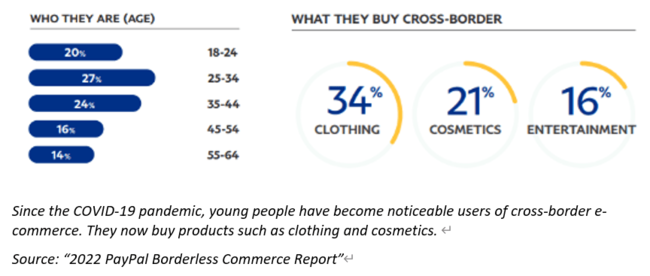Originally published in Japanese on December. 12, 2023
Opportunities in the Generation Gap
The other day, my teenage son showed me a reel (a short video about 15 seconds long) and asked me to cook the dish in the video. The reel introduced a recipe, but since it was very short, I could not understand how to make it just by watching it.
I ended up cooking while listening to the explanation step by step – a completely new experience for me. I learned that when you watch a cooking reel, you need to prepare the necessary utensils and ingredients in advance, pausing as necessary to cook as the video goes along. This unfamiliar approach to following a recipe left a strong impression and I started thinking more about the culture gap I felt.
In fact, I believe this gap is the key to new business. My son and his generation are smartphone natives, so they have a different sense of information and a different set of values than those who are not, and this strongly influences their consumption behavior.
Another example springs to mind – I was playing an online game recently, and I tried to make an in-app purchase, but the payment pop-up did not appear. I struggled with it for a while, but could not figure it out. The next day, I asked my reverse mentor, a person much younger than me, at the office to show me how to do it. The reason I struggled to complete the purchase was surprisingly simple – it was because I was in my browser, not the app itself.
Honestly, I was a little embarrassed by my tech knowledge gap, but then I reminded myself that technology is changing at a rapid pace, and this type of situation is not unusual. Instead, I have taken the liberty of appointing younger members within the company and relying on them so that I can catch up properly.
Smartphone natives intuitively know what brands are popular, what products are selling well, and how the UX (user experience) transitions within apps, browsers, and screens.
If marketers do not create advertising and marketing strategies based on this knowledge, they will miss out on a great opportunity.
Cross-border e-commerce trends
Since the COVID-19 pandemic, cross-border e-commerce has boomed. This is especially true among young people, and it now completely permeates their lives. According to the “PayPal Borderless Commerce Report,” Generation Z (18-24 years old) and Millennials (25-34 years old) now account for as much as 47% of cross-border online shopping users.

Until recently, the “standard theory” on cross-border e-commerce was that the target audience should be people over 40 because they represent a large population with disposable income and that luxury brand goods and luxury items were top sellers. However, e-commerce businesses will suffer if marketers do not change how they view their buyers and reevaluate the “standard theory.” We are now seeing that current trends are set by Generation Z and Millennials, so e-commerce brands need to start investigating how these groups think to win their business.
Most importantly, young people are using e-commerce sites without knowing whether the site is domestic or foreign. Nowadays, translation tools are everywhere, and word-of-mouth travels fast. In addition, logistics systems allow for faster delivery, and payment systems offer secure transactions.
Learning from experience
It is not uncommon to hear in the media that “goods are not selling in Japan” or that “young people are losing interest in consumption.” But is this really true? Based on my observations, I would say no – young people seem to regularly enjoy online shopping.
For example, not long ago, my son wanted the jerseys of a European soccer player and an American football player, so we looked for them online together. Since the jerseys he wanted were of players who are completely unknown in Japan, we had trouble finding them on Japanese e-commerce sites. When we finally found one, it was quite expensive.
However, we found that the products were available at low prices at shops based in Europe or the United States. At first, I was hesitant to use unknown, foreign e-commerce sites, but I felt secure making the purchases because the payments were made through PayPal, which has a buyer protection program that provides reimbursement in the event of a problem if certain conditions are met.
This experience made me keenly aware that the most important thing in cross-border e-commerce is to ensure shoppers feel safe and secure. Needless to say, my son was overjoyed when his jerseys arrived safely, and I felt I had made a good choice.
To further support safe, secure, flexible, and borderless shopping, PayPal Japan launched the Cross-Border Online Hub this summer to introduce overseas merchants. Most recently, the Hub has been introducing special offers from merchants such as OLIVE YOUNG, a Korean health and beauty store that is very popular among Japanese consumers, and LOOKFANTASTIC, a U.K.-based beauty boutique.
We also hold regular promotions with merchants such as SHEIN, a leading fast-fashion retailer from China, and Qoo10, an eBay e-commerce platform for Asia.
These e-commerce sites allow shoppers to shop stress-free in Japan and to purchase items that are not available in Japan at low prices. The Cross-Border Online Hub currently focuses on merchants that are popular among young Japanese buyers, but in the future, it will also introduce popular merchants in Europe and the U.S. to Japan.
Breaking tradition
The world is changing at a faster pace than ever before, partly due to the emergence of generative AI. Cross-border e-commerce is becoming more convenient with the evolution of technology, and young people’s values and consumption behavior are also changing.
Smartphone natives are naturally exposed to foreign cultures and lifestyles at an overwhelming rate through social media. In e-commerce, items posted on social media tend to become popular, and cross-border shopping is also increasing dramatically.
In other words, young people are actively purchasing products they want, regardless of the country of origin or the availability of the products in their local markets.
Sellers and marketers can no longer be stuck in a traditional mindset when it comes to e-commerce. Instead, their advertising and marketing strategies need to evolve with the changing pace of technology, or they will miss out on a great opportunity.
To take advantage of new opportunities and trends, Japanese companies should take on more challenges. My previous article “‘Used in Japan’ trend boosts ‘Japan brand’ in overseas markets,” also mentions this approach. If I can offer one piece of advice from this article, remember to not fear failure. Nothing is gained from always staying the same out of fear, and when we take that step to try something new, even if we fail, we can always try again.
Peter Kenevan is the VP and Head of PayPal Japan. He has more than 25 years of work experience at McKinsey & Company, a leading consulting firm, and has been a senior partner in the Tokyo office for many years. The views expressed here are his own.











